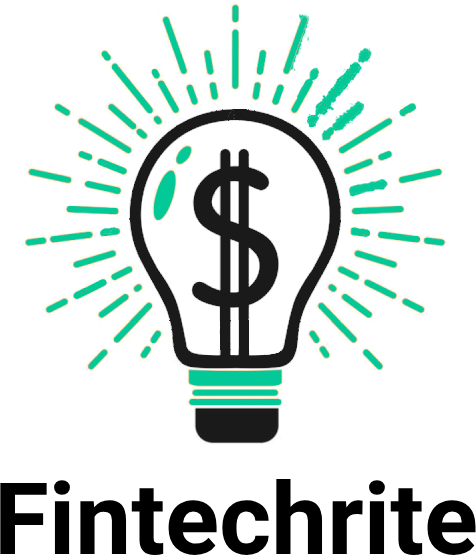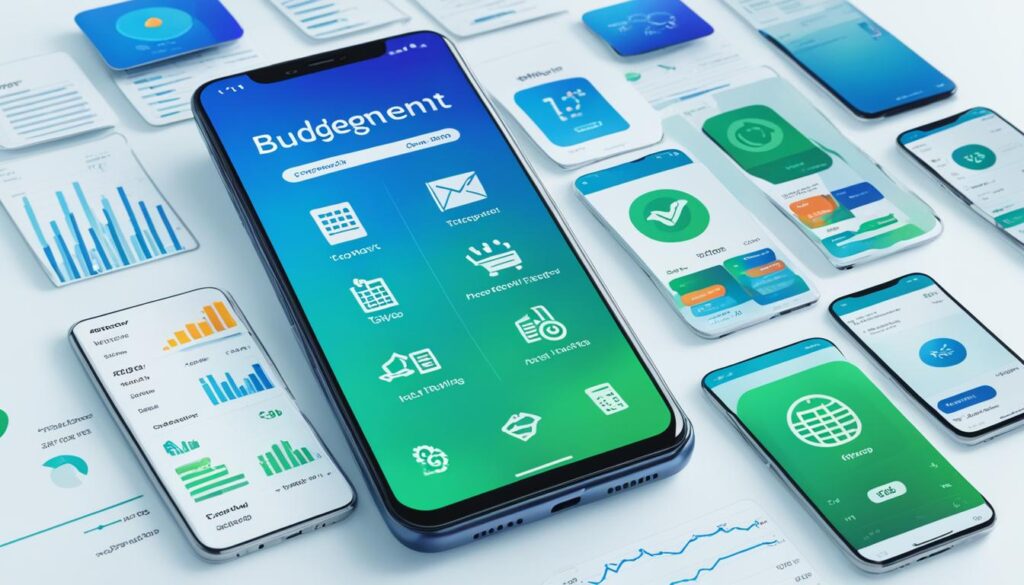In today’s world, personal finance apps serve as key tools for money management. If you found it hard to track expenses or plan for goals, you’ll be happy to find how these budgeting solutions can change your financial life. This article explores how personal finance apps make budgeting easy and effective.
From how budgeting apps operate to the leading options on the market, we’ll look closely at the main features that distinguish these apps. You learn benefits of these tools and the pros and cons to think about when choosing the best app suited for you. With personal finance apps to automate your budgeting, you gain a grip on your finances like before. Stay tuned to see how you can use their benefits to reach your goals without much worry.
How Budgeting Apps Work
Budgeting apps changed how people handle their personal finance as they make tracking income and expenses simpler with technology. These apps link to bank accounts, which helps users monitor transactions easily. This link ensures all funds in and out are tracked automatically, cutting down manual entry and mistakes.
After connections are made, budgeting apps sort money spending nicely. They put transactions into categories like groceries, utilities, entertainment, etc. Through this better organization, users see their spending clearly and find spots they overspend. For example, one person may see they spend too much dining while another spots their spend on subscriptions.
Moreover, many budgeting apps come with visual tools like charts and graphs showing a users financial situation over time. This visual representation helps users understand where thy stand and motivates them to stick to their budget goals. Indeed, good data visuals can help make smarter spending choices.
Automation makes budgeting apps special. Most apps have features that automate budgeting tasks efficiently. A user can create budgets based on categories, and the app updates as transactions happen. If a user nearing limits on spending, they get alerts, pushing them to rethink budgets. This keeps users informed and promotes better financial habits.
All in all, the tech in personal finance apps lets users get a current view in their finance, which makes budgeting easy and intuitive. This fosters better engagement leading to a more healthy financial lifestyle.
With clearer ideas on how budgeting apps work, let’s look into the many advantages personal finance apps bring, Iit makes budgeting easier for users.
Benefits of Personal Finance Apps
Personal finance apps holds many benefits. They helps with financial awareness and makes budgeting much easy. One key advantage is the visual insight for users. They present spending habits, savings, and budgets using graphs, helping people see their financial health.
Another benefit is the convenience of automatic tracking. Personal finance apps links with bank accounts and credit cards directly. They automatically import and categorize transactions. This saves users time and helps them watch their finances on mobile devices. Seventy-three percent of users feel more in control of their finances using these apps.
Furthermore, these applications give a full financial overview. They combine all income and expenses in one space. Users can set budgets, track their progresses, and see where to improve spending habits. Having everything together helps make informed decisions quicker.
In summary, personal finance apps empower users with tools to manage their finances better, improve spending habits, and more easily meet their future goals. Understanding the benefits shows why these apps matters.
Next, we should look into the best personal finance apps that is available now.
Top Personal Finance Apps
Selecting the right personal finance apps is important for managing your finances. To help with budgeting, here’s a list of leading personal finance apps you can use today:
-
You Need A Budget (YNAB): This app uses a zero-based budgeting method. It assigns every dollar a role. YNAB helps users spend intentionally. It also helps prioritize essential expenses. This allows individuals to gain control of their financial lives.
-
PocketGuard: Great for people who want to check their spending limits. PocketGuard makes budgeting easier. It shows you what is left after bills and necessities. Users can focus on fun spending while still understanding their financial situation.
-
Mint: Mint is one of the more complete personal finance apps. It brings together your bank accounts, credit cards, and investments. It has various budgeting tools and expense trackers. Users can learn about finance, security, and grow their knowledge.
-
Simplifi: Combining powerful functions with a simple design, Simplifi helps users track their spending. It offers a way to set up custom budgets in real-time. Engaging features and categories keep users aware of their spending habits.
-
Empower: Empower enriches users with budgeting and investment tracking. This app enables watching investment portfolios along with budgeting efforts. It is designed for users who want to manage their finances and investments easily.
Using these personal finance apps can make budgeting less complex. Each app has its unique features that cater to diverse budgeting styles, which can improve efficiency in managing finances.
When exploring various personal finance apps, think about important features they offer. In the next section, we will look at functionalities that make these budgeting tools essential for staying financially healthy.
Key Features of Personal Finance Apps
Personal finance apps are vital tools for managing money. They help users gain control over their financial situation. These apps come with features that simplify budgeting and improve financial understanding.
One key feature is secure linking of bank accounts. This allows automatic tracking of transactions. It removes the need for manual entries. Users can monitor their transactions in real time, which provides insight into spending patterns and account standings.
Moreover, customizable categories let users adjust their budgeting to their needs. By sorting expenses into categories, users can analyze their spending closely. This helps in spotting areas to reduce costs or change spending behavior.
Goal setting is another critical function of personal finance apps. Users can set financial targets, such as saving for vacations or paying off debt. Many apps include tools that track progress toward these goals, helping keep users inspired and focused.
An easy-to-use interface is important for managing expenses efficiently. A top budgeting app ensures straightforward navigation to essential features. This helps users manage finances without feeling lost in complex processes.
In conclusion, personal finance apps feature secure account linking for easy transaction tracking, customizable categories for better insights, goal setting for improved savings, and user-friendly layouts for easy navigation. These elements work together to support better financial control.
Considering these features is important. That way, you can pick the right budgeting apps that meet your financial needs.
Pros and Cons of Personal Finance Apps
Personal finance apps have become more popular. It’s essential to look at their pros and cons. This helps you see if they suit your needs. Budgeting apps include features that can improve how you manage your money.
A key advantage of personal finance apps is their convenience. You can manage your budget while on the go. Quick updates allow you to track spending or check savings goals anywhere. You can adjust your finances while shopping too.
Automation is another benefit. A lot of personal finance apps sync with bank accounts automatically. This helps categorize expenses and provide insights. Users save time since they do not need to record transactions manually. They reconcile accounts faster.
Though, budgeting apps have downsides. A common con is the learning curve. Some find it hard to use all features. Less tech-savvy users may get frustrated and stop using them.
Privacy is another important concern. Personal finance apps need access to sensitive info. Many fear data breaches or misuse. These worries can hold users back. Strong privacy policies and security measures from developers are needed.
In conclusion, personal finance apps have significant benefits. They offer convenience and automate financial tasks. Yet, users should think about learning curves and privacy issues. Knowing these pros and cons helps you choose the right budgeting app for your financial goals and lifestyle.
Choosing the Right Budgeting App
Selecting personal finance apps requires thought. You need to consider factors that support your habits and preferences for a effective budgeting experience.
Firstly, think about your budgeting style. Do you like visuals, like charts, or are you more for detail in your expenses? Knowing your style helps in picking the right app. Apps with bright, engaging dashboards may fit visual users, while others may suit text-focused ones.
Security features matter. Identity theft and breaches rise. Pick an app that focuses on protecting your private financial data. Search for personal finance apps that use encryption, two-factor authentication, and strong privacy policies to keep your information safe.
Additionally, consider your financial needs. Some budgeting apps help with debt management or investment tracking. If student loans are stressing you, find an app with strategies for debt repayment. An app that tracks investments might help you grow your financial portfolio.
Testing out free trials of various personal finance apps can be helpful. Hands-on experience shows which apps meet your needs and which feel easy to use.
The best budgeting app should help you track finances consistently. It empowers you to make choices about spending, saving, and investing towards reaching your financial goals.
With a suitable budgeting app, you can start automating your budgeting process. Let technology help you in managing your financial life easier.
Automating Your Budgeting Process
Automating budgeting can lessen the stress of managing money. Personal finance apps help with this task. They provide tools for tracking income and expenses easily. Hours spent on categorizing transactions are now unnecessary. These apps sync with your bank accounts automatically, giving you real-time access to your finances.
Real-time notifications from personal finance apps keep you updated about your spending. They inform you about habits as they happen. If you reach your budget limit for a category, alerts remind you to consider your spending choices. Such proactive management can help avoid overspending and stick to your budget.
These apps don’t just track expenses. They also help you save for goals without much effort. Features like round-ups or scheduled transfers direct money to savings or investments based on how you spend. This process aids in saving and builds financial security for future expenses or investments.
Integrating automated features in personal finance apps eases budgeting. They make sure you continuously work on financial goals. You can focus on other life aspects while your finances are taken care of in the background.
Conclusion
In conclusion, personal finance apps change the way we manage budgets. They make it easy and efficient to keep track. We explored these apps, their benefits, and examined good options available now. With features like automated tracking and setting goals, they help make your financial journey simpler.
Now is perfect time. Embrace the power of personal finance apps. Start by identifying which features most matter to you. Choose an app that aligns with your financial goals. Explore and try different apps until you find one that fits your needs.
Leveraging personal finance apps helps take control of your financial future and make smart decisions. You can reach your budgeting goals. Take first step today. See how an organized approach to personal finance leads to long-term stability and success.
About Fintechrite
Fintechrite operates within the dynamic financial technology sector, providing innovative solutions aimed at transforming the way people manage their finances.
Given the rapid evolution of financial services, understanding and accessing quality fintech solutions is essential for both individuals and businesses. Don’t miss out on potential advancements!
To learn more about financial technology innovations, visit fintechrite.com.

